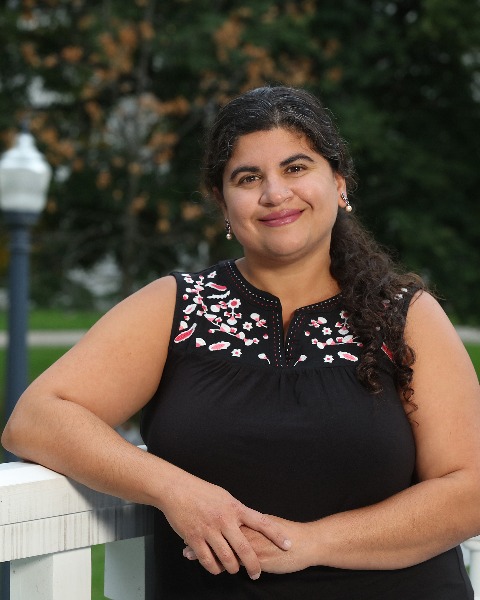Team Science
Breast
14: Three-dimensional navigated mass spectrometry for intraoperative margin assessment during breast cancer surgery

Shaila J. Merchant, MD
Associate Professor / Surgeon
Queen's University
Kingston, Ontario, Canada- MK
Martin Kaufmann, PHD
Research Associate
Queen's University
Kingston, Ontario, Canada - AJ
Amoon Jamzad, PhD
Post-doctoral Fellow
Queen's University, United States - TU
Tamas Ungi, MD, PhD
Adjunct Assistant Professor
Queen's University, United States - JR
Jessica Rodgers, PhD
Assistant Professor
University of Manitoba, United States - TK
Teaghan Koster, MD
Resident
Queen's University, United States - YC
Yeung Chris, BSc
Graduate Student
Queen's University, United States - NJ
Natasja Janssen, PhD
Post-doctoral Fellow
Queen's University, United States - JM
Julie McMullen, MSc
Pathologist's Assistant
Queen's University, United States - KS
Kathryn Solberg, MSc
Pathologist's Assistant
Queen's University, United States - JC
Joanna Cheesman, MSc
Pathologist's Assistant
Queen's University, United States - KR
Kevin Yi Mi Ren, MD
Assistant Professor / Pathologist
Queen's University, United States - SV
Sonal Varma, MD
Associate Professor / Pathologist
Queen's University, United States 
Shaila J. Merchant, MD
Associate Professor / Surgeon
Queen's University
Kingston, Ontario, Canada- CE
Cecil Jay Engel, MD
Associate Professor / Surgeon
Queen's University, United States - GW
G Ross Walker, MD
Associate Professor / Surgeon
Queen's University, United States - AG
Andrea Gallo, MD
Assistant Professor / Radiologist
Queen's University, United States - DJ
Doris Jabs, MD
Assistant Professor / Radiologist
Queen's University, United States - PM
Parvin Mousavi, PhD
Professor
Queen's University, United States - GF
Gabor Fichtinger, PhD
Professor
Queen's University, United States - JR
John Rudan, MD
Professor / Surgeon
Queen's University, United States
Abstract Presenter(s)
Author(s)
Positive margins occur in 25% of breast cancer (BCa) surgeries, often requiring re-operation. Margin status is not routinely available during surgery; thus, technologies that identify residual cancer on the specimen or cavity are needed to provide intraoperative decision support. Rapid evaporative ionization mass spectrometry (REIMS) chemically profiles the plume generated by cauterization to classify the tissue as either cancerous or non-cancerous, on the basis of lipid species; however, it does not indicate the location of the classified tissue within the breast in real-time. Our objective was to combine REIMS with spatio-temporal navigation (navigated REIMS), and compare performance of navigated REIMS with histopathology (gold standard) to assess margin status (positive or negative) in BCa surgery patients.
Methods: A multivariate model was trained using pathology-validated mass spectra from specimens from 11 patients, including 36 spectra from invasive cancer, and 118 from normal breast. This model was then tested on intraoperative data from 27 BCa cases conducted using navigated REIMS. Navigation was facilitated by an electromagnetic (EM) sensor placed on the cautery. A localization wire fitted with an EM sensor was placed into the tumor with ultrasound, and a 3D map of the tumor was created, allowing for real-time knowledge of tumor position. Spectra from the plume classified as BCa based on ratio of glycerophospholipid:triglyceride (PL:TG), were compared with the surgical pathology report.
Results: Our model exhibited >90% accuracy, driven by an elevated ratio of PL:TG in cancer as compared with normal tissue. 4/147 margins were assessed by pathology as positive, all of which were correctly identified by REIMS (Sensitivity=100%). Two margins were positive for ductal carcinoma in situ. 143/147 margins were negative, of which 130/143 negative margins were consistent with pathology (Specificity=91%). There were 13 negative margins determined to be positive by REIMS (false positive), of which 8 margins were either close margins (cancer cells detected within 1 mm of the inked margin), or high-density normal tissue. Other tissue such as skin and muscle also exhibited high PL content but could be rationalized by relative distance from the tumor and by information provided by the surgeon in real-time.
Conclusions: We have shown the feasibility of navigated REIMS in identifying margins containing cancer in real-time during BCa surgery. Access to this information intra-operatively may influence surgical decision-making, leading to reduced risk of positive margins.
Learning Objectives:
- Understand that differences in the glycerophospholipid:triglyceride ratio can differentiate cancerous from non-cancerous breast tissue.
- Understand the application of navigated REIMS in the detection of positive margins during surgery for breast cancer
- Understand the future promise of navigated REIMS in helping to reduce the risk of positive margins during surgery for breast cancer
